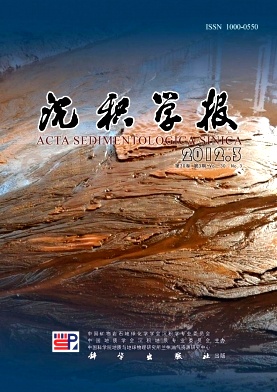Chemical Characteristics of Sediments in Horqin Desert and Climatic Change during the Middle and Late Holocene
- Publish Date: 2012-06-10
-
Key words:
- Horqin desert /
- geochemical element /
- climatic change
Abstract: The Horqin desert, intensely influenced by East Asian monsoon, is located in the desert-loess boundary belt and agricultural and animal husbandry interlaced zone in North China. The geographic setting suggests that the Horqin desert is very sensitive to the global climatic change, so it is an ideal zone for studying the response of global climatic change. Analysis on magnetic susceptibility, grain size and oxides and ratios of chemical elements from TL profile during the middle and late Holocene indicates that the regional climate is very unstable, which is classified into the following phases: ① From 6.0 ka BP to 4.2 ka BP, the summer monsoonal strength is continuously increased and dominated this region, the warm and humid climate is corresponding to the Holocene thermal maximum period, but exists climatic fluctuation on centennial scale, accompanying with weaker winter monsoon. During this period, the climate is warm and humid in 6.0~5.6 ka BP, 5.5~5.4 ka BP, 4.9~4.7 ka BP, 4.5~4.2 ka BP while it is relatively cold and dry in 5.6~5.5 ka BP, 5.4~4.9 ka BP, 4.7~4.5 ka BP. ② From 4.2 ka BP to 1.3 ka BP, compared with the former phase, the regional climate becomes relatively warm and humid but have smaller fluctuations, accompanying with the declined summer monsoonal strength. The climate is dominated by cold and dry in 4.2~3.63 ka BP, 3.57~3.4 ka BP while it is relatively warm and humid in 3.63~3.57 ka BP, 3.4~1.3 ka BP. ③ From 1.3 ka BP to 0.65 ka BP, the regional climate is frequently fluctuated and tends to warm and humid in the later stage. These climatic changes in Horqin desert are very coincident with the regional and global climatic change, reflecting the obvious consistency between them.
| Citation: | Chemical Characteristics of Sediments in Horqin Desert and Climatic Change during the Middle and Late Holocene[J]. Acta Sedimentologica Sinica, 2012, 30(3): 536-546. |






 DownLoad:
DownLoad: